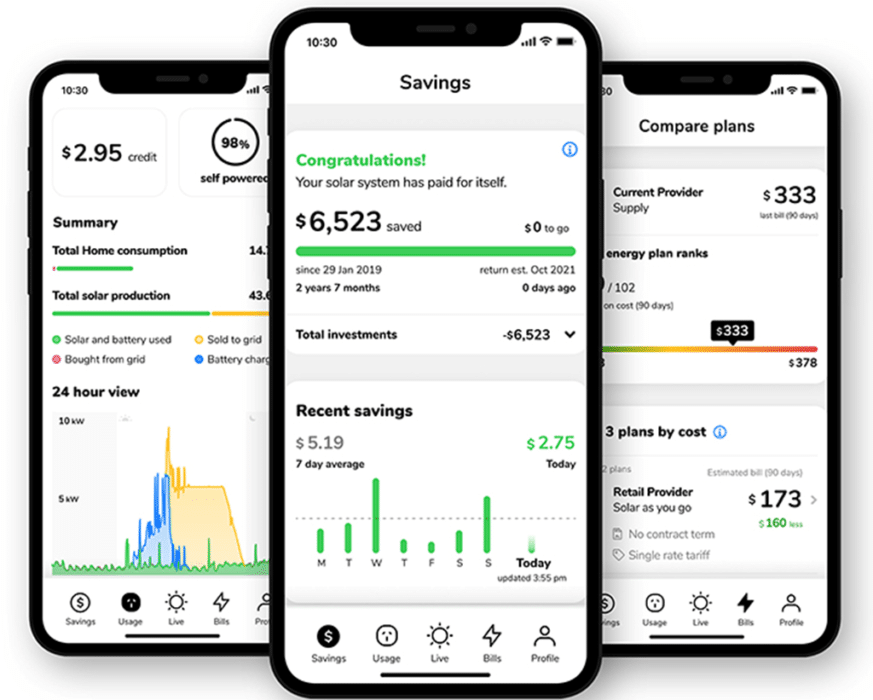Founded by CEO Preeti Bajaj and CTO Neil Maguire, Clipsal Solar has created a platform that plays the role of both a consumer-facing home energy management solution and a utility-facing distributed resource management and grid analytics solution. The company has also been financially backed by parent company Clipsal, a premier Australia electrical hardware company and Schneider Electric.
From day one, the company had not one, but two images to maintain.
“We were fortunate because Schneider Electric was and has been really introspecting,” said Bajaj. “They’re thinking ‘Well, what do we need to do, as a large industrial engineering firm, to get nimble, agile teams around us and to get amazing ideas with speed to market and agility into the market?’ The thought there is that large companies have capital, talent, channels, brand and worldwide access to R&D. Why would you allow small companies to eat your lunch in the age of innovation?”
Working for Schneider at the time, Bajaj was asked to put together a team to develop a customer-sided energy solution that would work in the Australian market, but would be applicable elsewhere.
This ability to seamlessly enter different markets is where Clipsal Solar has built its brand. To Bajaj and Maguire, it’s the company’s greatest strength. The company was essentially founded out of malleability — Bajaj told pv magazine that when she first met Maguire, she thought the outcome would be an all-in-one battery system, rather than an energy management platform.
Before a product was ever in mind, however, the early Clipsal team spent extensive time reaching out to and interviewing customers to learn what needs weren’t being met. Operating in Australia, where electricity prices are high and roughly 25% of the population has solar on their home and has for some time, the team quickly realized that the opportunity was not to create a market, but capitalize on an established one.
With such a high level of distributed generation penetration, the team found that the Australian market was already fairly well educated on the benefits of solar. What they needed was an energy management solution that could fit the wide array of hardware brands used across the country, one that could be as hands-on or hands-off as the customer wanted.
“As more and more inverter companies have connectivity through the cloud, we’ve built a platform to connect to all of those,” said Maguire. “We don’t really care which inverter that you have or which meter that you put into your subpanel or what big loads you put on your home. We are connecting all of those through the clouds and are maintaining those connections.”
It’s this twofold adaptability that gives Bajaj and Maguire confidence that Clipsal Solar will be able to translate its success in Australia into success in any market it enters, even in markets where the Clipsal name doesn’t carry the same prestige.
“One of the things that really impressed [Schneider Electric] in our pitch and subsequently, now that we’ve been delivering, is that the malleability of the software platform means that it can enter into different markets without having to export the same business model. Pajaj shared. “We may choose to actually package solar and storage with it in Australia, but we may choose to simply package the backend platform with application programming interface integration for solar installers in the United States.”
This content is protected by copyright and may not be reused. If you want to cooperate with us and would like to reuse some of our content, please contact: editors@pv-magazine.com.









By submitting this form you agree to pv magazine using your data for the purposes of publishing your comment.
Your personal data will only be disclosed or otherwise transmitted to third parties for the purposes of spam filtering or if this is necessary for technical maintenance of the website. Any other transfer to third parties will not take place unless this is justified on the basis of applicable data protection regulations or if pv magazine is legally obliged to do so.
You may revoke this consent at any time with effect for the future, in which case your personal data will be deleted immediately. Otherwise, your data will be deleted if pv magazine has processed your request or the purpose of data storage is fulfilled.
Further information on data privacy can be found in our Data Protection Policy.